1980GEBOS - the beginning
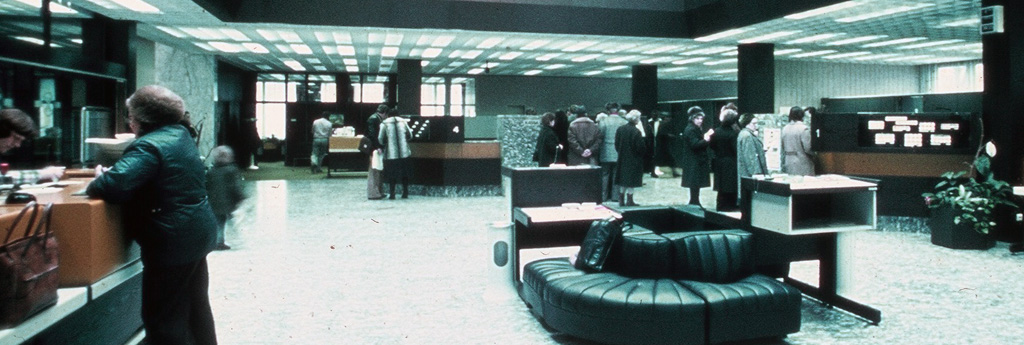
The new banking program GEBOS was released in 1980. All branches were now able to manage their savings account management with a program system. Raiffeisen Bau & Maschinen Kredit cooperative was the first company, that converted its bookings into this dialogue program. GEBOS was also a starting point for network operation. Because of the computer network, transactions were possible from all banks. From the customer’s point of view, the Raiffeisen sector and the banking sector thus merged into one institution.
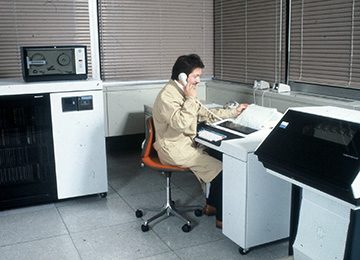
1980
GEBOS was quickly implemented thanks to the common path of the three Raiffeisen data centers, the Raiffeisen-Rechenzentrum NÖ-Wien, the Rechenzentrum Styria and the Rechenzentrum Vorarlberg. The banking system was in use up to EINE IT“ in five federal states.
1980
It was in 1978, eight years earlier, when the decision was taken at the Raiffeisen computer center, that the four existing banking booking programs were replaced it with a common product.
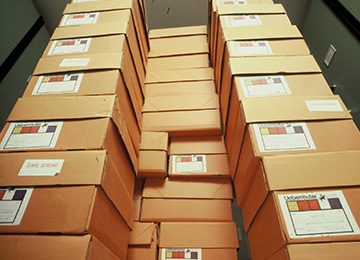
1981
The RRZ was one of the first companies to consistently use 100 percent recycled paper since 1981.
1981
The demand for paper was 30 million pages per year over the 90 years of printing daily lists and excerpts, and despite the increased use of technology, it increased to around 300 million A4 pages per year from 2001 onwards.
The silver was also recovered from the microfiche and recycled.
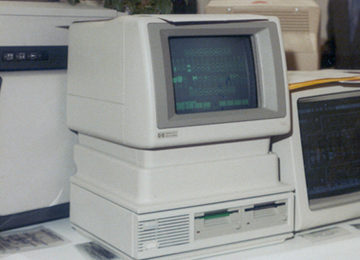
1981
The PC becomes commodity. In anticipation of the trend, RRZ founded computer club Chipsi and organizes computer camps.
1981
This sociable platform for those who were interested in computers had its own newspaper and even gained television presence. Through sponsorship of the central bank, an attractive club pub was procured. Chipsi Computer Club was an Austrian trendsetter well into the nineties – when the Internet made the world a single computer club. With up to 300 members, Chipsi was a small forerunner of the World Wide Web. In the computer camps Basic was programmed until late in the evening.
First ATM in Austria
In 1980 it was finally time, the ATM age began in Austria. On September 8, the first ATM was put into operation in Vienna. This marked the beginning of a new era of money supply for the Austrians: withdrawal with a card and PIN code had become possible.
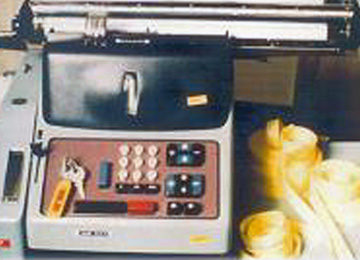
1982
Made of plastic, paper or metal-plastic laminate and stamped with
Holes provided, the punched tape serves for storage, processing and transmission
of information.
1982
In the early years of data processing, the capture of data using tape was a cheap and secure way to successful data processing. Around 200 such devices were in use at the Raiffeisenkassen in the catchment area of the RRZ. New capture terminals and reusable magnetic tape cartridges displaced the punched card devices. In April 1983, the last punching equipment of the RRZ was taken out of service.
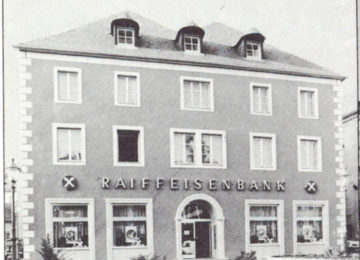
1982
In December 1981, the last nö. Raiffeisenkasse was converted to computerized accounting. The path started in 1970 was completed as planned.
1982
The Raiffeisen computer center now serves more than 800 Raiffeisen bank branches in three federal states. For the Raiffeisenkassen, including the central and top-level institutes of the money sector, approx. 2.5 million accounts and more than 50 million bookings per year, with daily peaks approaching below the 500.00 mark.
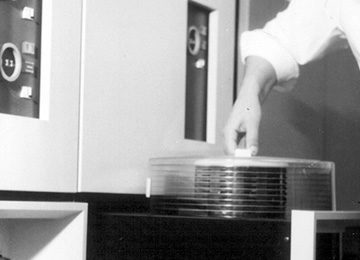
1982
The fast-moving online conversion as well as the realization and implementation of new applications result in a constant increase in disk requirements.
1982
6 disk drives of the new thin-film technology with a storage capacity of 2.5 GB each rented a total of 15 GB. In order to be able to support this disk type by software, it was necessary to use the operating system version BS 3000 / MSP.
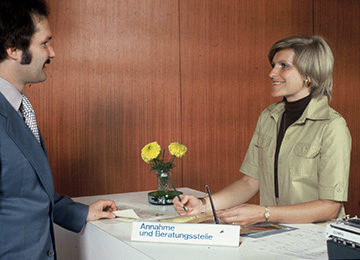
1983
In the RRZ, the introduction of the Gebos program was speeded up. The everyday life of banks has gradually been switched to electronic processing.
1983
40 online Raiffeisenkassen have already been converted to the Gebos-Dispo-Online program. Nearly parallel, the live operation was recorded with the nationwide agreed on-line access method to the federally compatible large computer systems.
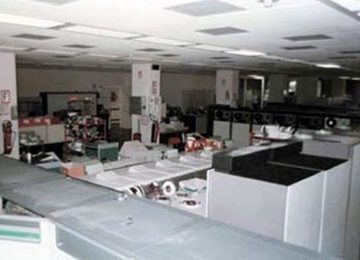
1983
The newly established Safety Committee (SIRIUS) decided to carry mandatory ID cards in the buildings of the RRZ and the access to the system rooms was controlled.
1983
Not only the incident of the fire in the National Bank, but also the increasing data volume and the increasing number of daily transactions, caused the RRZ at a very early stage to intensively deal with the topic of security. In addition, video surveillance systems have been installed and access to the system rooms even better secured.
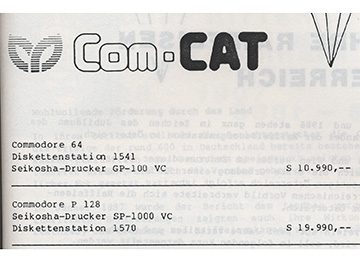
1983
The worldwide success of the PC causes the RRZ to found an independent subsidiary for microcomputer trading.
1983
COMCAT was the first in-house startup with the goal of an expanded range of services. For some years, ComCat sold personal computers at attractive employee terms. ComCat was also the very first participation – many were still following.
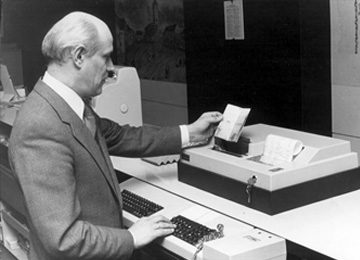
1984
the first bank statement printer of Austria was installed in Perchtoldsdorf customers could print the information about their account balance for the first time.
1984
In such a routine situation, the machine could replace the human labor excellent and was also accepted gladly, because the automated printing and a certain privacy was maintained. This service to the customer prevailed long-term and completely and was supplemented by further possibilities of information retrieval.
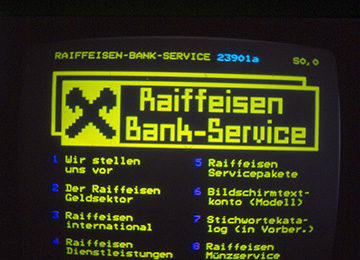
1984
Screen text was a new medium. On a black background with bright colors, information was provided in a very edgy font.
1984
As part of the federal project Gebos, the balance queries, bank statement queries of the last 25 transactions, transfers and the ordering system for various forms or checks were realized via the new medium screen text to the customers in home banking transactions.
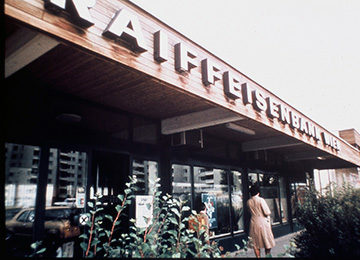
1986
Raiffeisenkasse Frauenkirchen was the 100th Raiffeisenkasse to start operating online in 1986.
1986
At the same time, this change marks the beginning of the online age for Burgenland, because at the same time Podersdorf also switched over. These striking events fall within a period in which the first online connection commits its 10th anniversary. In May 1975, after the completion of the Raiffeisenhaus, Raiffeisenbank Wien Hollandstraße became the first Raiffeisenbank to go online.
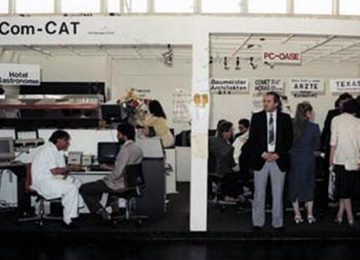
1986
The first RRZ messestand at the IFABO. The pure sales success of this marketing instrument was rated as rather modest, but the customer contacts were extensively maintained.
1986
If the fair was not a classic selling tool, it was an annual highlight, a popular come together of the industry. The RRZ booth including sausage stand and beer tap proved itself fair by trade fair, as an excellent contact exchange for the entire EDP industry and for the finalization of purchase deals. Thus, the stand was maintained as a mere communication opportunity, without any value added on the balance sheet.
1987
In the entrance hall of Raiffeisenhaus Vienna, the first bank statement printer will be set up in October 1987. The possibility of bank statement printing represents a significant step towards the `bank of tomorrow`.
As a result, all employees have the opportunity to create a current bank statement by registered letter of debit card or customer card. This service was available Monday to Friday from 7:00 to 20:00. As a result, all employees had the opportunity to print out their current bank statement on the way to or from work or during their lunch break.
1987
Like with the hidden camera, the first bank statement printers in the stores were unobtrusively watched through a glass wall. An exciting situation: The first customer was an elderly lady came to the new machine. To the delight of the responsible observers, the lady effortlessly picked up her move. Then she walked resolutely to the counter to have him read aloud.
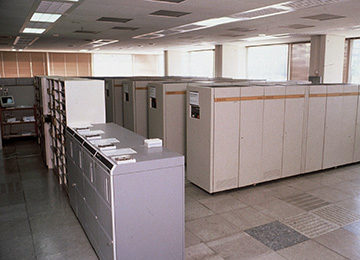
1988
RRZ is also starting to offer data center services to other industries. RRZ is one of its first major external EDP customers to win the newly merged sugar industry.
1988
The then Sugana closed its data center and moved to the RRZ host. The associated SAP R / 2 host solution could now also be offered for use on the open market. This led to an SAP cooperation with Fiducia Karlsruhe. A new business consultant scenario had emerged.
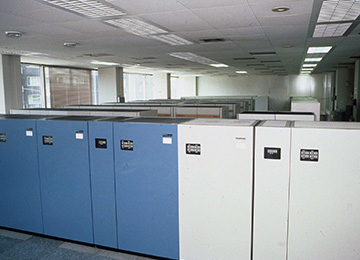
1989
The start of the consistent two-location philosophy guaranteed the maintenance of the production plant in the event of a breakdown. The increasing importance of dialogue processing for the day-to-day business was taken into account with the implementation of a new security concept.
1989
In the course of the construction of Raiffeisen Zentralbank Österreich, a second branch of the RRZ was set up at the „Stadtpark“ location, which normally functions as a development computer center. In the event of a disaster, the most important processing operations can be initiated there within 24 hours.
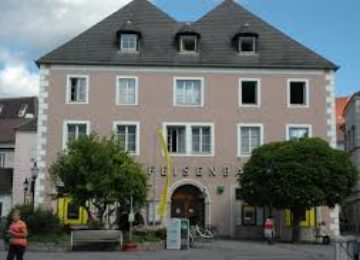
1989
In 1979, RB Krems became the first Lower Austrian pilot fund for online operations after the software had already been successfully deployed in two branch offices of Raiffeisenbank Wien since 1976.
1989
10 years later, on the occasion of the 20th anniversary of the RRZ, the last Burgenland main institution and the online network were connected. The conversion of the last Lower Austrian headquarters was also planned for the 4th quarter. Due to problems with the postal service this could not be done until March 1990. This concluded the „dialogue process“ initiated 3 years ago.
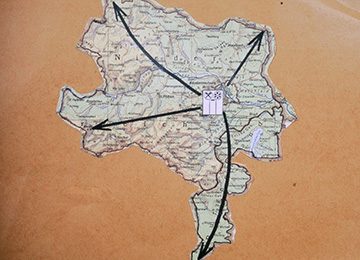
1989
As at 31.12.1989, the network comprised 607 branches with 1608 terminals.
1989
The entire data network would be strung together at a distance of about 8,000 kilometers. This corresponds approximately to the distance between Vienna and New York. Based on this network, electronic services could be increasingly offered. The entire data network would result in a distance of about 8,000 kilometers. This corresponds approximately to the distance between Vienna and New York. Building on this network, electronic services could be increasingly offered.
